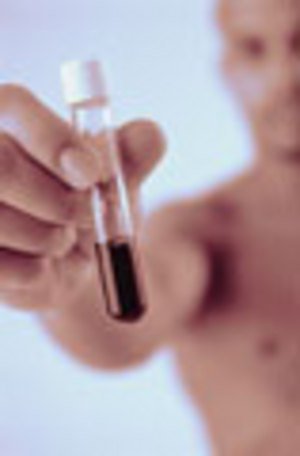It is estimated that one in five Americans currently suffer from genital herpes. During the past two decades, the number of cases of this virus has increased significantly, with the largest increase seen in adolescents and young adults. Due to the continued spread of this disease, herpes testing options are more important then ever before.
If you believe you have been exposed to the herpes virus, but you are not yet showing any symptoms, a herpes blood test is your best option. These tests do not actually detect or confirm the virus; rather they determine whether antibodies for the virus exist in the blood. This new type of herpes testing is far more sophisticated than earlier versions. By identifying the presence of the antibodies in the blood rather than waiting for actual symptoms to appear, diagnosis can be made earlier.
IgM and IgG are the antibodies your body produces in order to fight the virus. Newer herpes testing methods can detect the presence of these antibodies in your blood very soon after infection. IgG appears within a few months after infection and remains in the blood for life. IgM appears even earlier than IgG, but this antibody may disappear later. The herpes test designed to detect only IgM in the blood should be avoided for several reasons. Many assume that if a test identifies IgM, the patient has recently acquired herpes. This assumption can not be trusted as IgM has been known to reappear in blood tests in up to one in three people during recurrent outbreaks. There is currently no known herpes testing method that can accurately determine when an individual contracted herpes.
In addition, the IgM herpes blood test is not reliable in distinguishing the strand of the HSV 1 virus that causes cold sores and fever blisters from HSV 2, which causes genital herpes. Considering that almost 90% of the American adult population may have antibodies to the HSV 1 virus, this type of herpes testing could result in many false positive results. The IgM herpes test may also give a positive result based on antibodies that are actually related to the viruses causing chickenpox, shingles and mono.
Considering these drawbacks to IgM herpes testing, it is best to request a test designed to detect IgG antibodies. This herpes blood test can accurately differentiate between antibodies for HSV 1 and HSV 2, resulting in fewer false positives for genital herpes. The drawback to this test is that it does take time for IgG antibodies to reach detectable levels. While they may reach a high enough level in one person within two to three weeks, it may take up to three months in someone else. It is best to wait a minimum of twelve weeks from your last date of possible exposure to be tested. This timeframe should ensure an accurate test reading.
In addition to blood tests, there are other types of herpes testing, although all have notable drawbacks. If an individual is already symptomatic, a herpes test involving a culture of the lesions can be used. The culture should be taken within the first 48 hours of the appearance of symptoms. Positive results are highly reliable. However, there is a fairly significant possibility of receiving a false negative result. Another herpes testing method is the Polymerase chain reaction (PCR) test. These tests are highly accurate in detecting the virus when it is present and will likely replace culture tests in the future. However, it is not widely available at present.
Currently, the most reliable method of herpes testing is the IgG blood test. To ensure the most accurate result possible, schedule your test for 12 weeks or more after your last opportunity for exposure.



